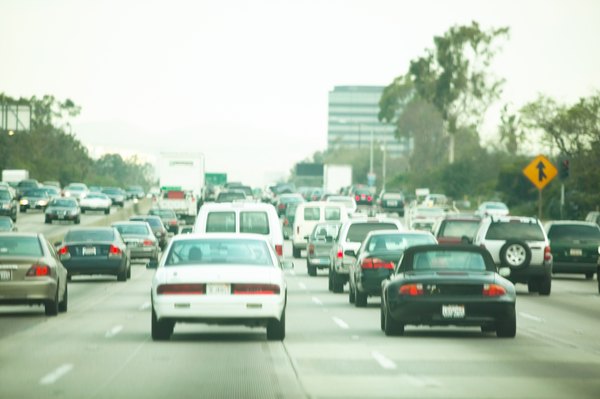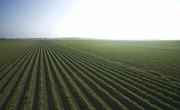
As the world's population continues to grow, waste in all forms becomes an ever-growing problem. Pollution deteriorates the environment and drastically affects human and animal health. In the 21st century, carbon dioxide and other air pollutants, water pollutants and land pollutants are the most common types of substances contaminating the Earth.
Carbon Dioxide
Carbon dioxide exists naturally in the environment, trapping infrared radiation and keeping the planet warm. Without it, the Earth would be a chilly negative 18 degrees Celsius (zero degrees Fahrenheit). Human activity since the Industrial Revolution has led to an excessive amount of carbon dioxide in the atmosphere, and as a result, the Earth has been warming unnaturally over the last couple hundred of years, a phenomenon known commonly as global warming. Carbon dioxide (CO2) is the largest contributor to global warming. Electricity production, transportation and industry are the largest anthropogenic, or human-borne, sources of carbon dioxide.
Other Air Pollutants

Ozone, particulate matter, carbon monoxide, nitrogen dioxide, sulfur dioxide and lead are six of the more commonly found pollutants in the air today. Carbon monoxide, sulfur dioxide and lead are typically released directly into the atmosphere from industrial activity. Ozone, while periodically a byproduct of industrial activity, is usually created from the chemical decomposition of nitrogen oxides released from automobiles. Nitrogen dioxide is the product of the oxidation of nitrogen oxides. Particulate matter, a broad category for hundreds of different chemicals less than 10 micrometers in size, is another type of air pollutant. It is emitted directly into the atmosphere from industrial activity, or it is formed from the chemical reactions of sulfur dioxides and nitrogen oxides in the atmosphere.
Water Pollution
Dirt, bacteria and nutrients are the three most common categories of pollutants in the Earth's water. Dirt is carried into the Earth's rivers and streams by rainwater. It can clog the gills of fish, kill fish eggs and prevent sunlight from reaching the bottoms of streams and rivers, which can interfere with photosynthesis. Deforestation and mining are the two most common sources of dirt. Overflowing sewers and runoff from animals waste are the two most common sources of bacterial water pollution. Bacteria cause water-borne diseases such as cholera, typhoid fever and amebiasis.
Land Pollution
Improperly disposed trash is the most common source of land pollution. Each day, Americans throw away 200,000 tons of edible food waste and throw 1 million bushels of litter out of their cars. Half of the world's properly disposed trash is sent to a landfill, and just 2 percent is recycled. If land pollutants are stowed improperly, they can seep directly into the ground, contaminating water tables. They can also leak toxic vapors into the atmosphere, contributing directly to air pollution.
References
- Elmhurst College: Greenhouse Gases
- University College Dublin: Blackbody Radiation
- U.S. Environmental Protection Agency: Overview of Greenhouse Gases, Carbon Dioxide Emissions
- EPA: Six Common Air Pollutants
- EPA: Air Trends, Basic Information
- EPA: Particulate Matter, Basic Information
- EPA: Water: Educator Resources, Three Big Pollutans
- Centers for Disease Control and Prevention: Waterborne Disease Prevention Branch
About the Author
Charles Alex Miller began writing professionally in 2010. He currently writes for various websites, specializing in the sciences. He is a full-time employee in the chemicals and environmental sciences industry.
Photo Credits
Jupiterimages/Photos.com/Getty Images
